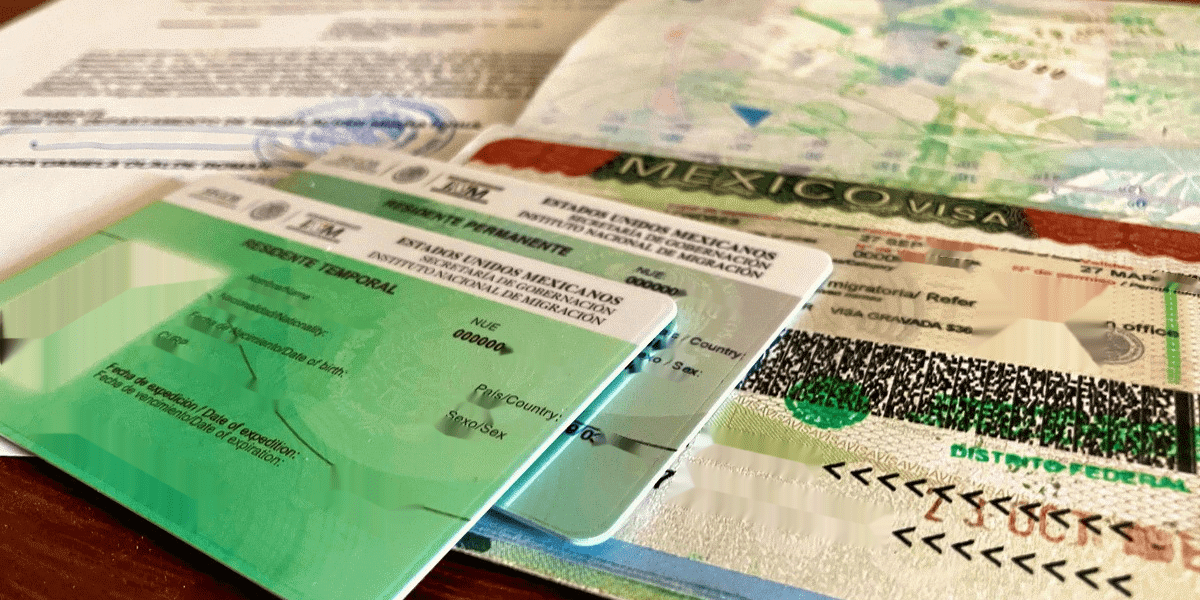If you are a Mexican American with a partner who wants to live in Mexico, navigating the immigration and residency options can feel overwhelming. Whether you are looking to formalize your dual citizenship or help your partner obtain the right residency status, understanding the available options is crucial. This guide will walk you through the different paths available, including regularization, family unity visas, and obtaining dual citizenship.
1. Formalizing Your Mexican Citizenship
As a Mexican American born in the United States, you may already be considered a Mexican national by birth. Mexico recognizes jus sanguinis (right of blood) nationality, which means that if one or both of your parents are Mexican nationals, you have a right to Mexican citizenship. This means you can formalize your Mexican citizenship without having to go through the naturalization process.
To begin this process, you can register your U.S. birth certificate at a Mexican consulate or embassy. This involves submitting documents such as:
- Your U.S. birth certificate
- Proof of your parents’ Mexican nationality
- Other identification documents required by the consulate
Once your birth is registered, you can obtain a Mexican passport, granting you all the rights of a Mexican citizen, including the ability to own property, work, and reside in Mexico without the need for additional permits.
2. Residency Options for Your Partner
Your partner has a couple of pathways to obtain legal residency in Mexico. They may qualify for residency through the Family Unity program, or, if they have overstayed a tourist visa, they may be eligible for regularization.
Option 1: Family Unity Residency (Unidad Familiar)
If you formalize your Mexican citizenship, your partner can apply for residency through family unity as the spouse or common-law partner of a Mexican national. This pathway offers significant advantages:
- Temporary Residency: Your partner can first apply for a temporary resident visa, valid for one year and renewable for up to four years.
- Permanent Residency: After two years of holding temporary residency, your partner can apply for permanent residency. In some cases, they may even be able to apply directly for permanent residency, depending on the consulate and local laws.
To apply, your partner will need:
- A valid passport and tourist visa (FMM)
- Your marriage certificate (apostilled and translated into Spanish if married outside Mexico)
- Proof of your Mexican citizenship
- Proof of address in Mexico
The family unity visa process is typically more straightforward and has less stringent financial requirements compared to other residency types.
Option 2: Regularization for Overstayed Visas
If your partner has already overstayed their visa in Mexico, the Regularization Program (Programa de Regularización Migratoria) may provide a pathway to legal residency.
- Eligibility Requirements: This program is for individuals who have exceeded the duration of their tourist or temporary visas. They may need to demonstrate proof of prior entries into Mexico, such as showing that they entered before a specific date.
- Application Process: Applications are made through the National Institute of Migration (INM). Required documents generally include proof of previous entry, identification, and proof of address in Mexico. Financial requirements for regularization are often waived or significantly reduced.
This option allows individuals who might otherwise face complications due to overstayed visas to transition to temporary residency legally and avoid penalties.
3. Considerations for Both Options
- Local Variations: Immigration policies may vary between different Mexican consulates or INM offices. Requirements can be different depending on the location where you are applying. Some consulates might allow for more flexibility, such as skipping temporary residency and applying directly for permanent residency.
- Financial Requirements: Applications based on family unity generally have more lenient financial requirements compared to other pathways. It is advisable to confirm the specific financial documentation required at the consulate or INM office where you will apply.
- Seek Legal Assistance: Navigating Mexico’s immigration laws can be complicated, and it is advisable to consult with an immigration attorney or facilitator who understands the local nuances and procedures.
Conclusion
If you are a Mexican American looking to reside in Mexico with your partner, formalizing your Mexican citizenship is a great first step. This makes the residency process for your partner significantly easier and more streamlined. Your partner can apply for residency through family unity, which is less cumbersome than other immigration routes. Additionally, if your partner has overstayed their visa, regularization is an option that can help them obtain legal status without heavy penalties.
By understanding these different pathways and working with immigration professionals, you can make the transition to living in Mexico a smooth and rewarding experience for both you and your partner.
